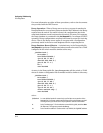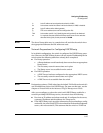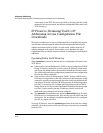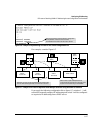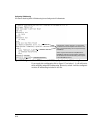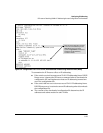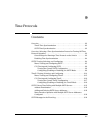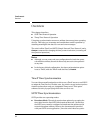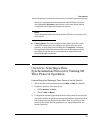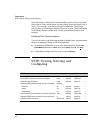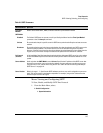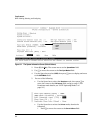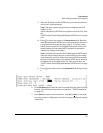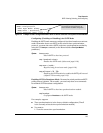
Time Protocols
Overview
Overview
This chapter describes:
■ SNTP Time Protocol Operation
■ Timep Time Protocol Operation
Using time synchronization ensures a uniform time among inter operating
devices. This helps you to manage and troubleshoot switch operation by
attaching meaningful time data to event and error messages.
The switch offers TimeP and SNTP (Simple Network Time Protocol) and a
timesync command for changing the time protocol selection (or turning off
time protocol operation).
Notes
■ Although you can create and save configurations for both time proto-
cols without conflicts, the switch allows only one active time protocol
at any time.
■ In the factory-default configuration, the time synchronization option
is set to TimeP, with the TimeP mode itself set to
Disabled.
TimeP Time Synchronization
You can either manually assign the switch to use a TimeP server or use DHCP
to assign the TimeP server. In either case, the switch can get its time synchro-
nization updates from only one, designated Timep server. This option
enhances security by specifying which time server to use.
SNTP Time Synchronization
SNTP provides two operating modes:
■ Broadcast Mode: The switch acquires time updates by accepting the
time value from the first SNTP time broadcast detected. (In this case,
the SNTP server must be configured to broadcast time updates to the
network broadcast address. Refer to the documentation provided
with your SNTP server application.) Once the switch detects a partic-
9-2



